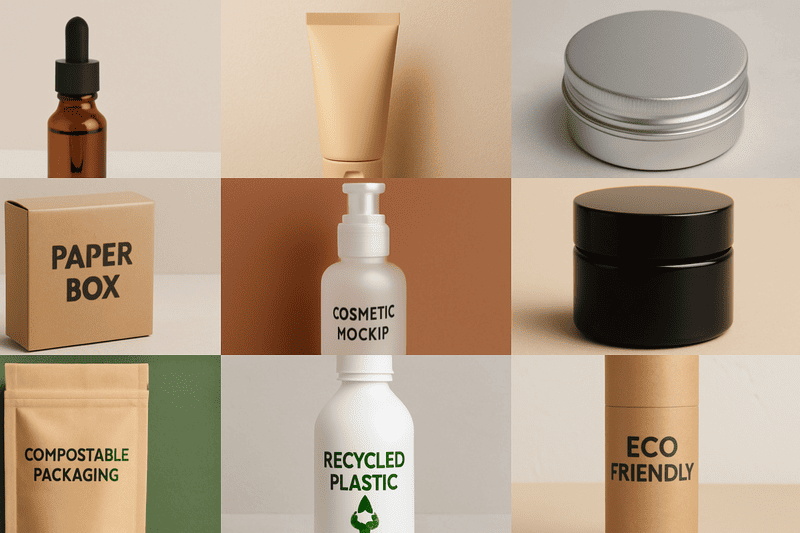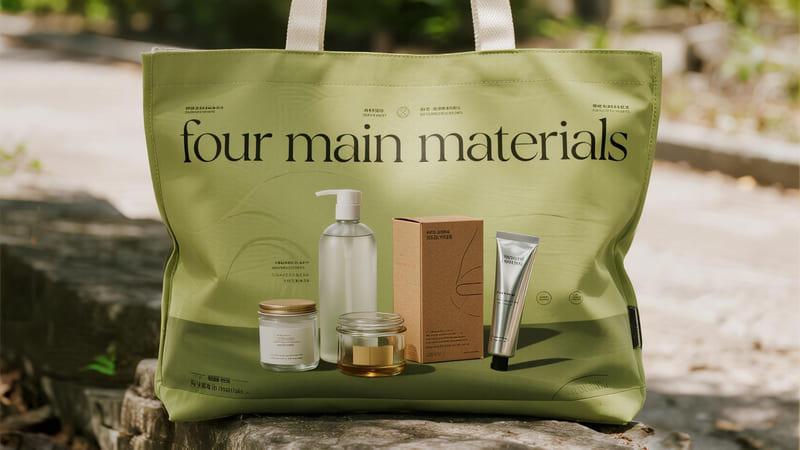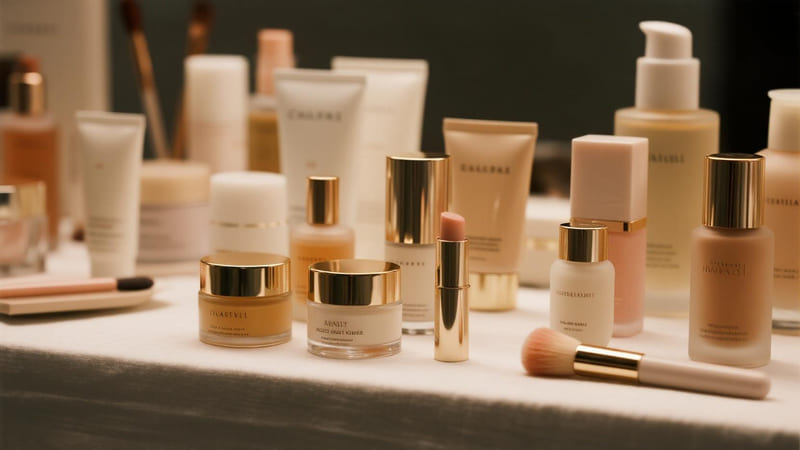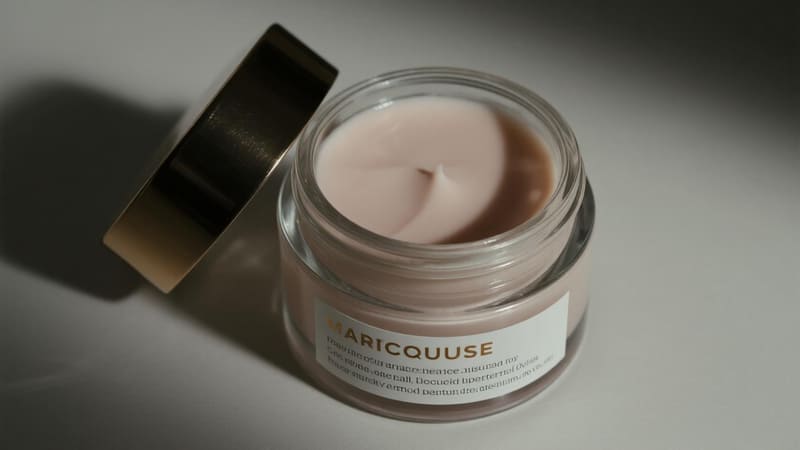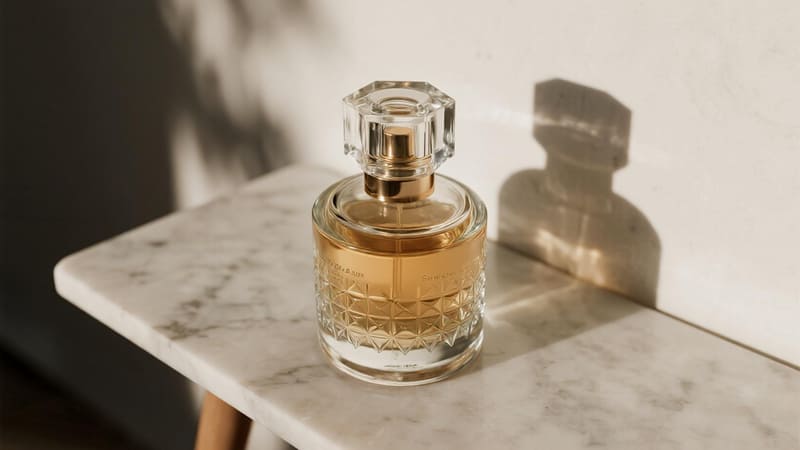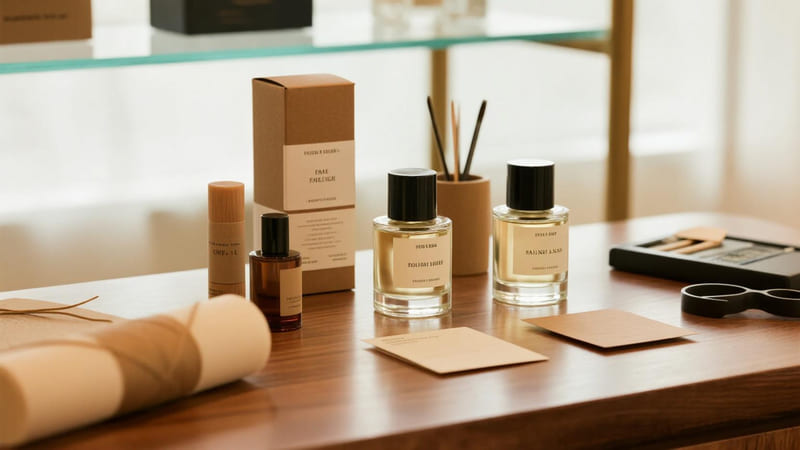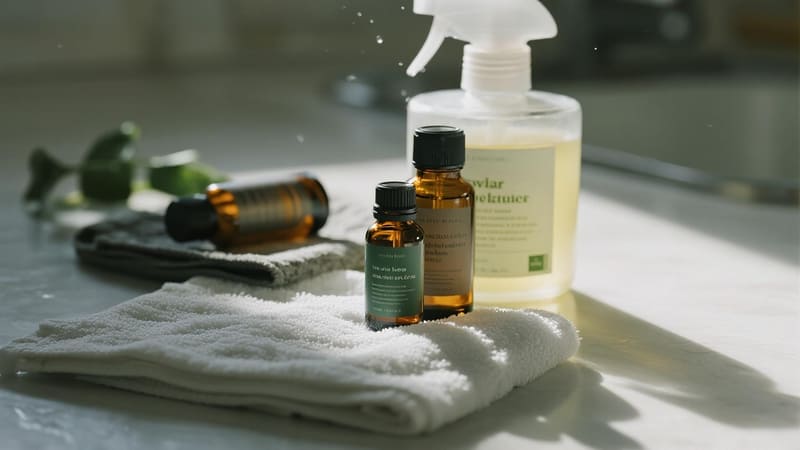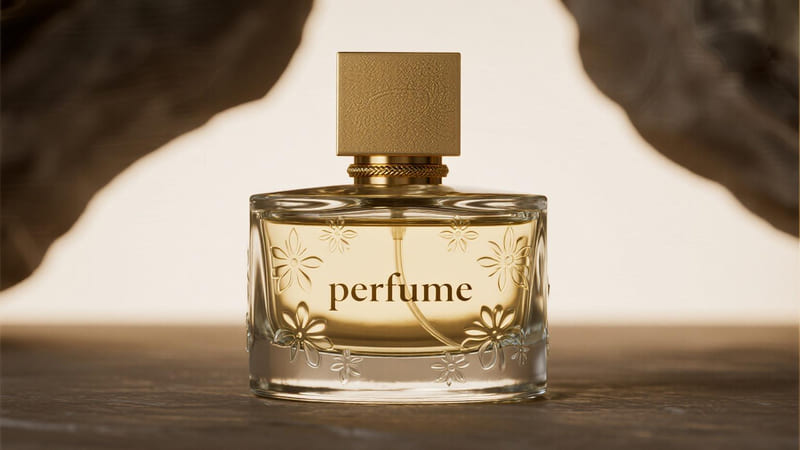Cosmetic packaging material refers to the diverse range of substances used to create the containers, boxes, labels, and components that enclose, protect, and present beauty products. The choice of material is a critical decision that impacts product stability, brand perception, user experience, and environmental footprint.
Cosmetic packaging material is any substance—primarily plastics, glass, paper/paperboard, and metals—used to manufacture the primary containers (bottles, jars, tubes) and secondary packaging (boxes, sleeves) for makeup, skincare, haircare, and fragrance products. The material is selected based on its compatibility with the formula, protective qualities, aesthetic potential, and cost.
As a global manufacturer with ShineTop for over two decades, we work with a vast palette of these materials every day, transforming them into the beautiful and functional packaging that lines retail shelves. Understanding these core materials is fundamental to understanding the cosmetic industry itself.
What are the 4 Main Types of Cosmetic Packaging Materials?
The vast array of cosmetic packaging can be categorized into four primary material groups, each with its own unique set of properties, advantages, and applications.
The four main types of cosmetic packaging materials are: 1. Plastics (highly versatile for bottles, jars, tubes), 2. Glass (premium and inert, for luxury skincare/fragrance), 3. Paper & Paperboard (dominant for secondary boxes), and 4. Metals (primarily aluminum for tubes, cans, and premium components).
Let’s explore each of these key categories in more detail.
1. Plastics
Plastics are the most widely used material for primary cosmetic packaging due to their incredible versatility, light weight, durability, and cost-effectiveness.
- Common Types:
- PET (Polyethylene Terephthalate): Known for its excellent clarity (glass-like), strength, and good barrier properties. Widely used for bottles (lotions, toners, cleansers). Highly recyclable (#1).
- PP (Polypropylene): Valued for its good chemical resistance and higher heat tolerance. Common for jars, caps, and airless pump systems. Can be clear or opaque. Recyclable (#5).
- PE (Polyethylene – HDPE/LDPE): HDPE (High-Density) is rigid and strong, used for shampoo and conditioner bottles. LDPE (Low-Density) is flexible and squeezable, perfect for tubes. Both are recyclable (#2 and #4 respectively).
- PMMA (Acrylic) & SAN: Offer superior, glass-like clarity and a heavier, more luxurious feel. Often used for high-end jars and bottles.
- Sustainability: The industry is rapidly shifting towards using PCR (Post-Consumer Recycled) versions of these plastics (e.g., rPET, rPP) and exploring bio-based plastics (like sugarcane PE). ShineTop offers a wide range of these sustainable plastic options.
2. Glass
Glass is the material of choice for luxury and prestige cosmetic packaging, prized for its premium aesthetic and superior protective qualities.
- Properties:
- Inertness: Glass is chemically non-reactive, meaning it won’t interact with the cosmetic formula, preserving its purity and integrity. This is crucial for sensitive or natural formulations.
- Premium Feel: Its weight, clarity, and cool touch convey a sense of quality and luxury.
- Excellent Barrier: It’s impermeable to gases and moisture, protecting the product from oxidation and contamination.
- Recyclability: Glass is 100% and infinitely recyclable without any loss of quality.
- Common Uses: Perfume bottles, foundation bottles, nail polish bottles, and jars/bottles for high-end skincare like serums and creams.
- Variations: Can be clear, frosted, or colored (e.g., amber, cobalt blue) to provide UV protection for light-sensitive ingredients.
- ShineTop Expertise: We are a major manufacturer of cosmetic glass, with extensive post-processing capabilities like coating, frosting, and printing to create stunning custom designs.
3. Paper & Paperboard
Paper and paperboard are the dominant materials for secondary packaging (the outer box), serving as the primary canvas for branding and information.
- Types:
- Folding Paperboard (e.g., SBS, CUK, Recycled Board): Used to create the retail boxes (folding cartons) that house the primary container.
- Rigid Board (Greyboard): A thick, dense paperboard used to construct high-end, non-collapsible "set-up" boxes for luxury products and gift sets.
- Kraft Paper: Known for its natural, rustic look, often used by eco-conscious or artisanal brands.
- Properties: Excellent printability, versatile for structural design, lightweight, and renewable (if sourced responsibly).
- Sustainability: Look for FSC (Forest Stewardship Council) certification, which ensures the paper comes from responsibly managed forests, and high recycled content.
- ShineTop Expertise: We produce millions of custom cosmetic boxes, offering a full range of paperboard types and premium finishes like foil stamping, embossing, and soft-touch lamination.
4. Metals
Metals, primarily aluminum, offer durability, excellent protection, and a sleek, modern aesthetic.
- Aluminum:
- Properties: Lightweight, shatterproof, provides a complete barrier to light, air, and moisture. Highly recyclable.
- Common Uses: Collapsible tubes (for creams, ointments), aerosol cans (for hairsprays, dry shampoos), tins (for balms, solid perfumes), and premium components like caps and collars for glass bottles.
- Tinplate (Steel):
- Properties: Very strong and durable.
- Common Uses: Tins for balms, waxes, or candles. Less common than aluminum for primary cosmetic containers today.
- Zamac (Zinc Alloy):
- Properties: A heavy, high-density metal alloy that gives a very luxurious, cool-to-the-touch feel.
- Common Uses: Premium caps for perfumes and skincare, often plated with gold, chrome, or other finishes. My client Mohammed from Iraq frequently specifies custom Zamac caps for his luxury fragrance sets.
What is the Best Material for Packaging Cosmetics?
The "best" material is not a one-size-fits-all answer; it’s a strategic choice that depends entirely on the specific product, brand positioning, and functional requirements.
The best material for packaging cosmetics is the one that best balances product compatibility, protection needs, brand aesthetics, user experience, cost, and sustainability goals. For example, glass is often best for luxury serums, PCR plastic for a sustainable and functional lotion bottle, and FSC-certified paperboard for the outer box.
How to Choose the Best Material:
- For Product Protection:
- Sensitive Formulas (e.g., Vitamin C, Retinol): Choose materials with excellent barriers like airless plastic systems, aluminum tubes, or dark glass.
- Simple Formulations (e.g., basic cleansers, body lotions): Standard PET or HDPE plastic is often sufficient.
- For Brand Image:
- Luxury: Glass, heavy-walled acrylic (PMMA), Zamac, and rigid paperboard boxes convey a premium feel.
- Natural/Eco-Conscious: PCR plastics, bamboo/wood, glass, and uncoated/recycled Kraft paperboard align with this ethos. My client Anna from Thailand uses these materials extensively.
- Clinical/Dermo-cosmetic: Clean, white PP or HDPE plastic and simple, informative paperboard boxes often work well.
- For User Environment:
- In the Shower: Shatter-resistant plastic (PE, PET) is safer than glass.
- For Travel: Lightweight plastic tubes or small bottles are more practical.
- For Sustainability:
- Prioritize refillable systems, then materials with high PCR content that are also widely recyclable (glass, aluminum, PET, HDPE).
What is the Primary Packaging of Cosmetics?
Primary packaging is the most critical layer, as it directly interacts with the cosmetic formula.
The primary packaging of cosmetics is the container that is in direct contact with the product itself. This includes the bottle, jar, tube, compact, lipstick case, or any other vessel that holds the formula. Its main functions are to contain the product safely, be chemically compatible with it, and allow for its convenient dispensing.
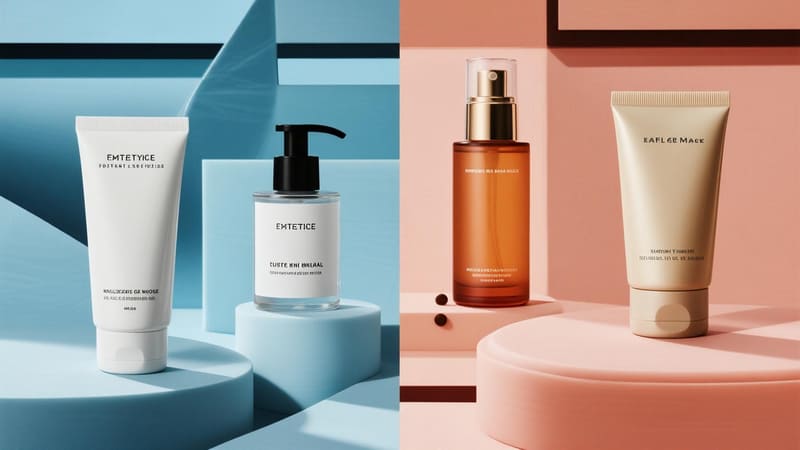
Examples of Primary Packaging:
- The glass bottle and dropper assembly for a serum.
- The plastic tube and flip-top cap for a face wash.
- The acrylic jar and inner liner/lid for a face cream.
- The aluminum pan (godet) and plastic case (compact) for an eyeshadow.
- The lipstick mechanism (base, bullet holder) and cap.
The choice of material for primary packaging is governed by strict compatibility and safety standards to ensure there is no leaching from the package into the product or degradation of the product caused by the package.
What is the Most Common Packaging for Cosmetics?
While the industry is diverse, a few packaging formats have become ubiquitous due to their versatility and cost-effectiveness.
The most common packaging for cosmetics are plastic bottles (with pumps or caps) for liquids like lotions and shampoos, plastic jars for creams, plastic tubes for gels and cleansers, and paperboard folding cartons as the outer retail box for nearly all types of products.
These formats have become industry standards because they offer a great balance of functionality, cost, and design potential.
- Plastic Bottles: Their adaptability with different closures (pumps, sprayers, caps) makes them suitable for a huge range of liquid viscosities.
- Plastic Jars: The wide mouth is ideal for scooping out thicker creams and balms.
- Plastic Tubes: Offer hygienic, controlled dispensing for semi-solids.
- Paperboard Boxes (Folding Cartons): The default for secondary packaging, providing a cost-effective way to protect the primary container and display extensive branding and information.
Even within these common types, there is immense room for customization in shape, color, material (e.g., using PCR plastic or premium acrylic), and decoration, which is where a specialized manufacturer like ShineTop adds significant value for brands.
Conclusion
The materials used for cosmetic packaging are a carefully selected palette of plastics, glass, paper/paperboard, and metals, each chosen for its unique ability to protect, perform, and present. From the versatile utility of plastics to the premium purity of glass and the branding power of paperboard boxes, these materials form the foundation of the beauty industry’s physical identity. As sustainability becomes increasingly critical, the innovation and responsible use of these materials, particularly through recycled content and circular design, are shaping the future of cosmetic packaging.

